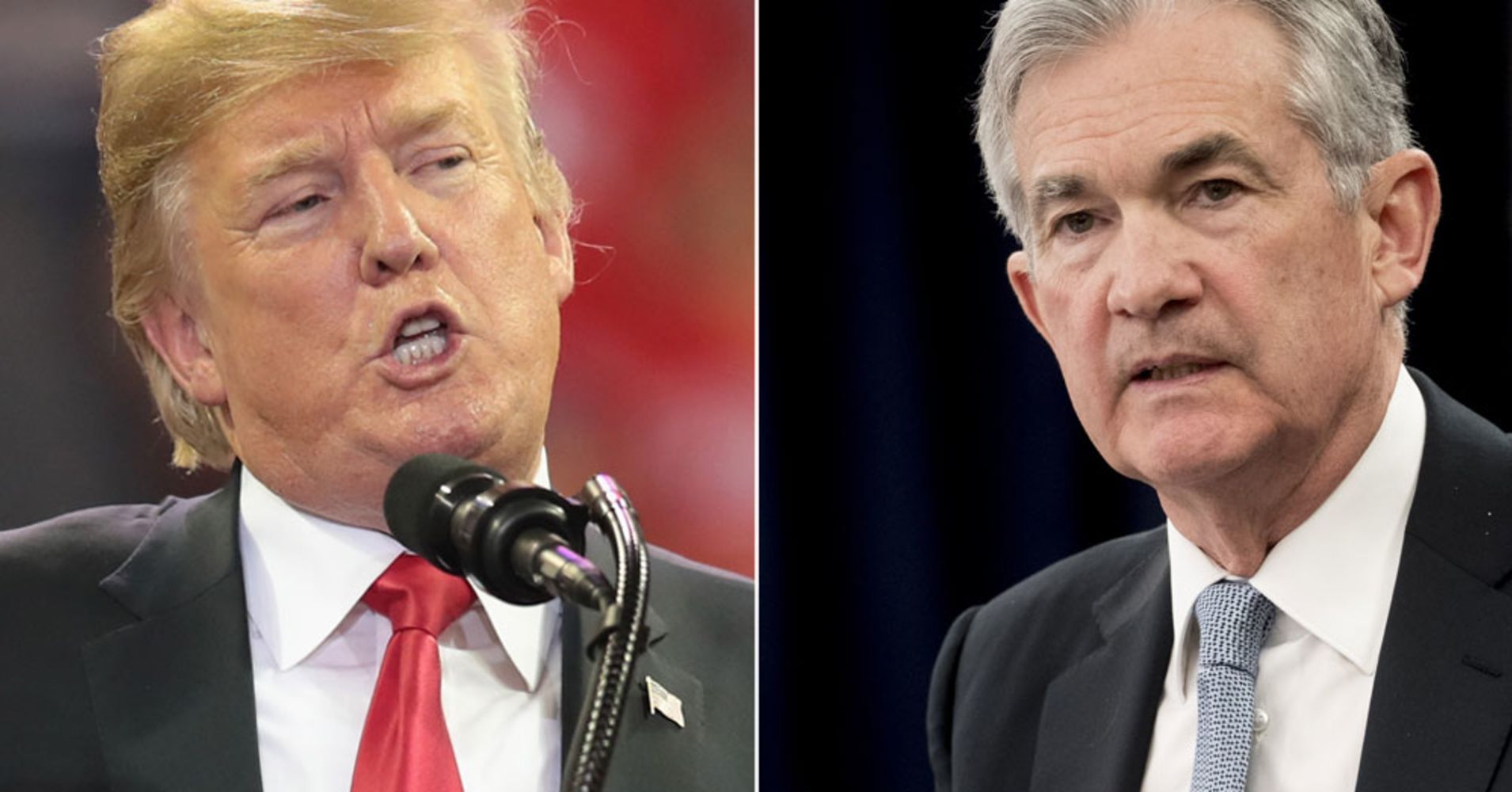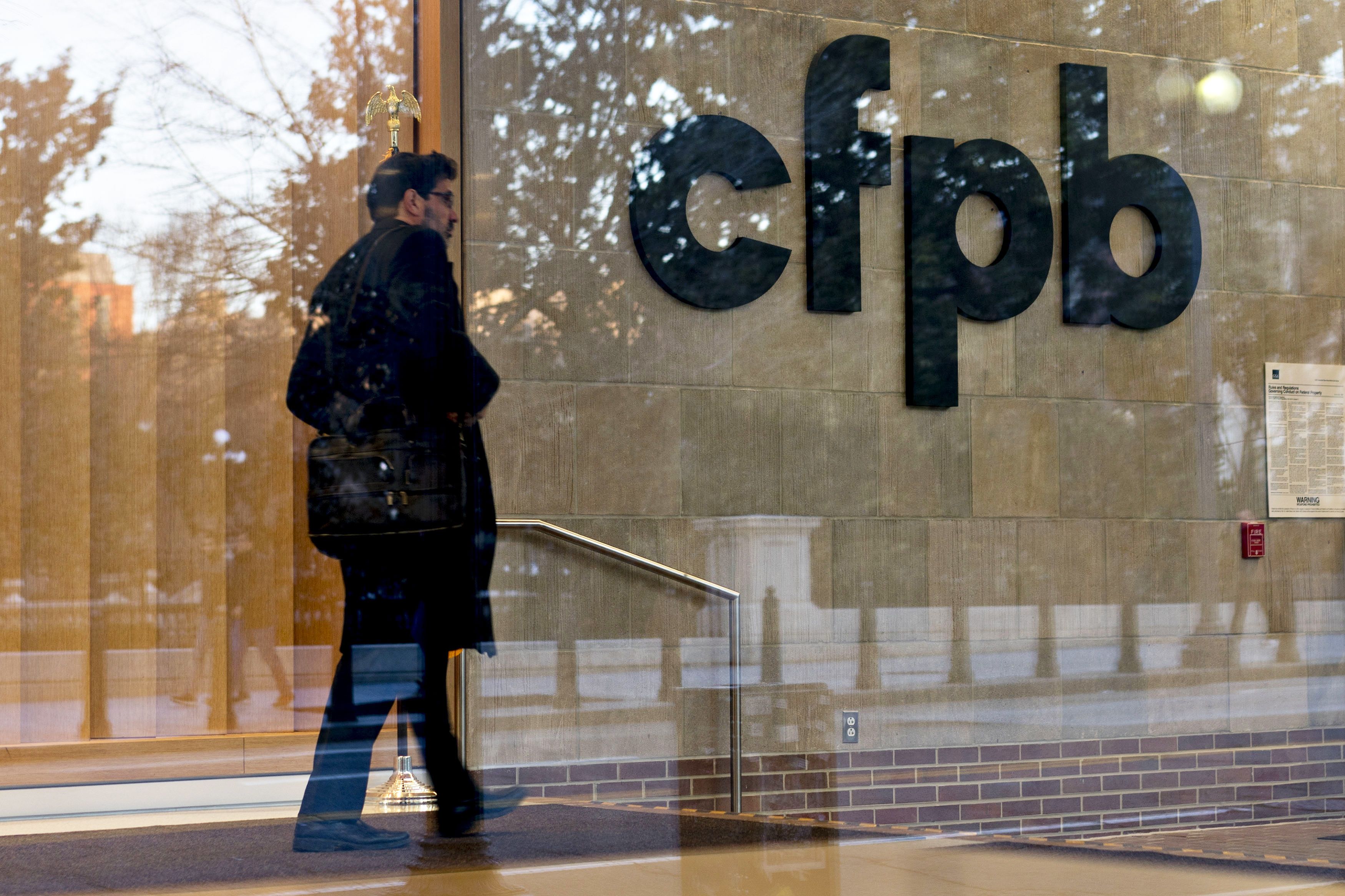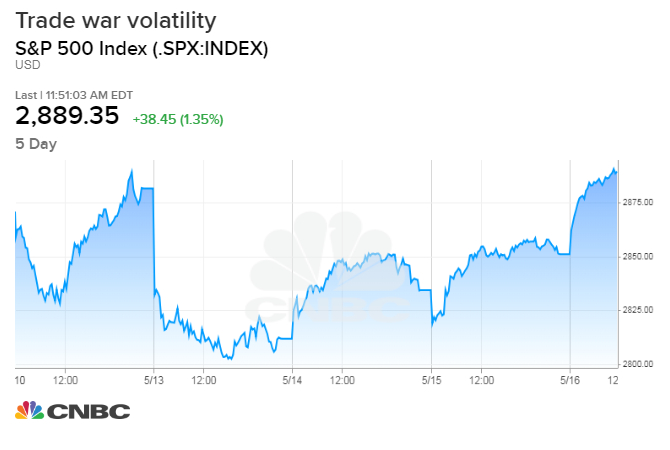
In the ongoing battle between President Donald Trump and the Federal Reserve over interest rates, it’s consumers that are caught in the middle.
div > div.group > p:first-child”>
The Fed has already hiked its benchmark rate nine times since December 2015. In March, it indicated that it is likely done with increases for the rest of 2019 despite previously forecasting two more at the end of last year. The Fed currently targets the federal funds rate to a range between 2.25% and 2.5% (its highest level in a decade).
For your average American, these decisions have a wide-ranging impact — both good and bad: The prime rate, which is the rate that banks extend to their most creditworthy customers, is typically 3 percentage points higher than the federal funds rate. That not only determines your savings rate, but also the rate used for many types of consumer loans, particularly credit cards.
Trump has been vocal in his resistance to higher rates, raising concerns that increased borrowing costs will put the brakes on economic growth.
However, central banks normally tighten policy in an effort to control prices when the economy is expanding. That’s why rising rates are generally considered an indication that the economy is doing well and pave the way for pay raises and a better return on savings, despite the impact on borrowing costs.
Now, in his latest attack, Trump raised the stakes by calling for the central bank to cut interest rates by 1 percentage point.
In general, lowering the fed funds rate would encourage banks to lend more money, increasing the money supply and boosting growth. This usually happens during periods of economic contraction — but it’s not unprecedented to preemptively cut rates while the economy is still growing.
Still, “it would be very unusual to see the Fed cutting interest rates when unemployment is the lowest it’s been in 50 years,” said Greg McBride, chief financial analyst at Bankrate.com.
“There would have to be some notable deterioration economically or significant disruption on global financial markets before a rate cut becomes viable,” he said.
The most recent Fed statement noted that household spending slowed and inflation is running below 2%. “Those aren’t conditions under which the Fed feels compelled to change interest rates in either direction,” McBride added.
But as the debate over interest rates heats up, here’s a look at who stands to win or lose:
Most credit cards have a variable rate, which means there’s a direct connection to the Fed’s benchmark rate.
For example, every time the Fed raises rates by a quarter point, you’ll pay an extra $ 2.50 a year for every $ 1,000 of debt, which takes effect within one to two billing cycles.
Rate cuts, however, don’t work exactly the same way, to the detriment of consumers. “There’s a lag,” McBride said.
“If you look at credit card agreements, the language they use allows them to use the highest prime rate as of the last 60 days. It gives them latitude to quickly pass on a rate hike but drag their feet on a rate cut.”
As it stands, the national average annual percentage rate hit 17.73% this month, while the median was 21.36%, according to CreditCards.com.
The economy, the Fed and inflation all have some influence over long-term fixed mortgage rates, which generally are pegged to yields on U.S. Treasury notes, so there’s already been an upswing since the Fed started raising rates.
Still, fixed-rate mortgages remain below 5% and although housing prices are slightly higher, “it’s as good as it’s been in a long time,” said Rick Bechtel, head of U.S. residential lending at TD Bank.
Many homeowners, however, also have adjustable-rate mortgages or home equity lines of credit and those are directly pegged to the prime rate, which means there is a more immediate change when the Fed adjusts rates. While some ARMs reset annually, a HELOC could adjust within 60 days.
“As prime moves, the next cycle you would have a higher or lower rate,” Bechtel said.
For example, for every quarter-point drop in rate on a $ 100,000 balance, the borrower is going to save about $ 21 a month, according to TD Bank.
For those planning on purchasing a new car in the next few months, any rate move – up or down – likely will not have any material effect on what vehicle you drive off the lot.
A quarter-point difference on a $ 25,000 loan is $ 3 a month, according to Bankrate.com. “Nobody is going to upgrade from a compact to an SUV,” McBride said.
What will affect what kind of car you can afford is checking that your credit is in good shape, negotiating the price of your vehicle and shopping around to secure the best rate on your financing.
Alternatively, consider a pre-owned car, which is less expensive to buy at the outset and lowers depreciation costs substantially over time.
Because banks’ terms allow them to be slower to raise rates on savings products than they are on loans and credit cards, even with a Fed rate increase, banks do not pass on much of that increase to their customers.
However, after a few years of rate hikes, shopping for a savings account finally pays off with some top-yielding accounts now as high as 2%.
On the flip side, banks could be quick to cut those rates if the Fed lowers its benchmark rate. “Banks are notorious for dropping rates quickly and raising them slowly,” said Ric Edelman, founder and executive chairman of Edelman Financial Services.
That would erode recent gains in savings rates immediately, McBride added. And, if those rates decline below the rate of inflation, savers will lose buying power over time, he said.
To capture the best rate on deposits, check online savings accounts, community banks or credit unions; often you can pick up more than a full percentage point that way.
An account paying 1.1% in interest earns about $ 275 more per year than an account with a rate of 0.01% on savings of $ 25,000, according to NerdWallet.
Federal student loan rates are fixed, so most borrowers are not immediately affected by a rate move. But on the upside, the interest rate on new federal student loans is already set to decrease by half a percentage point in July.
If you have a private loan, those loans may be fixed or have a variable rate tied to the Libor, the prime rate or T-bill rates — which means that as the Fed raises or lowers rates, borrowers will likely pay slightly more or less in interest, although by how much will vary by the benchmark.
While most borrowers have federal student loans, many others have a mix of federal and private loans, and nearly a quarter of student loan borrowers don’t know the difference.
Regardless of a potential rate move, identify the loans you’ve got and see if refinancing into a fixed rate makes sense.
More from Personal Finance:
Student loan rates are dropping. Here’s what you need to know
75% of Americans are winging it when it comes to their financial future
Here are some safe places for your cash right now






